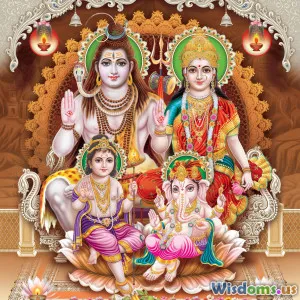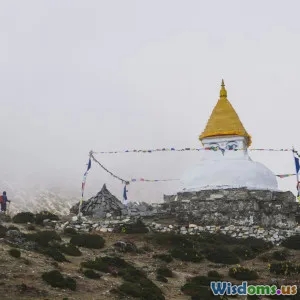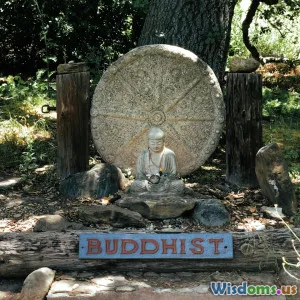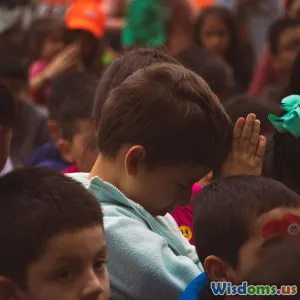
What Happens During a Hindu Puja A Step By Step Guide
9 min read Explore the sacred ritual of Hindu Puja with an in-depth, step-by-step guide that unveils its profound meanings and timeless traditions. (0 Reviews)
What Happens During a Hindu Puja: A Step By Step Guide
How a timeless ancient ritual bridges the divine and the earthly world
Hindu Puja is much more than a mere routine; it is an ancient expression of reverence, gratitude, and connection between devotees and the divine. Whether performed daily at home shrines or with grand ceremonies in temples, Puja embodies profound symbolism and a direct dialogue with spiritual forces. But what precisely happens during a Hindu Puja? How does each step contribute to this sacred act? This guide uncovers the intricate layers of this ritual, illuminating its meaning and the transformative journey it invites.
Introduction to Hindu Puja
Puja, derived from the Sanskrit word "pūjā," meaning reverence or worship, is at the heart of Hindu devotional practice. It is a ceremony designed to honor deities, cultivate blessings, and foster inner peace.
Historically, Hinduism’s scriptural traditions—such as the Vedas, Upanishads, and Puranas—offer guidance over puja's sacred elements, highlighting the importance of purity, devotion (bhakti), and mantra chanting. As Antonio Rigopoulos, a scholar of Indian traditions, notes, "Puja is simultaneously a symbolic enactment of cosmic rhythms and a ‘meeting point’ where divinity is made accessible to the devotee."
The Puja ritual varies extensively, influenced by regional customs, particular deities worshipped, and occasions ranging from daily personal worship to important festivals like Diwali or Navaratri.
Preparing for the Puja
Selecting the Location and Setting the Altar
Cleanliness is a spiritual mandate. Spaces designated for puja—like a home altar or temple mandir —are thoroughly cleaned to symbolize clarity and freshness of mind.
An altar is carefully arranged with idols or pictures of chosen deities, often including key symbols like:
- Kalash (vessel) filled with water and topped with mango leaves and a coconut, representing life and fertility.
- Flowers and garlands symbolizing beauty and transient life.
- Diyas (oil lamps) signaling enlightenment and dispelling ignorance.
Gathering Essential Puja Items
A typical puja involves particular materials: fresh flowers, sandalwood paste, turmeric, sacred ash (vibhuti), incense sticks (agarbatti), fruits, sweet offerings (prasadam), bells, and a conch shell (shankha). Each item plays a symbolic and functional role.
For example, sandalwood paste cools the body and mind, flowers please zeroes the senses, and incense purifies the air — creating an environment conducive to devotion.
Mindful Preparation of the Worshipper
Purification rituals such as handwashing or sprinkling water signify cleansing of physical and mental impurities before approaching the divine. Often, the devotee dons traditional attire, reflecting respect for the sanctity of the Puja.
Step by Step Puja Procedure
This section provides a general outline; however, ritual nuances vary greatly:
1. Avahana (Invocation)
The Puja begins with the invocation of the deity's presence. This involves chanting mantras such as the 'Om' sound, or specific deity names to invite divine energy into the altar.
Eg., in Ganesh Puja, the mantra "Om Gan Ganapataye Namah" is repeated to invoke Lord Ganesh.
2. Dhyana (Meditation)
A moment of silent meditation or visualization helps the devotee focus the mind, visualizing the deity seated before them, radiating divine light.
This mindful concentration deepens sincerity and opens one’s heart.
3. Shodhana (Purification of the Deity's Image)
Puja items like water, milk, honey, and fragrant oils are gently applied to the idol or image (Abhishekam). This act symbolizes washing away impurities and honoring the deity with sacred nourishment.
In temples, this ritual may be elaborately detailed, with priests chanting sacred hymns during the process.
4. Alankara (Adornment)
Post cleansing, the deity is adorned with fresh clothes, garlands, sandalwood paste, and kumkum (vermilion). It reflects celebrating the divine as a living presence.
This visual embellishment evokes a sense of joyous respect.
5. Naivedya (Offering of Food)
Food offerings ranging from fruits, sweets like laddoos, and cooked rice are presented respectfully, recognizing the divine as the ultimate guest.
This sharing represents surrender and gratitude. Often, the offered food later becomes Prasadam—sanctified food shared among devotees.
6. Deepa Aradhana (Offering of Light)
Waving the lit diya (lamp) in front of the deity is a key act symbolizing the dispelling of darkness, representing wisdom overcoming ignorance.
The circular waving motion is said to invoke both the visible and invisible presence of divinity.
7. Mantra Chanting and Bhajans (Devotional Songs)
Reciting Sanskrit mantras or singing hymns creates a sacred sonic environment, believed to carry spiritual vibrations that elevate mind and soul.
Mantras like the Gayatri or simple invocations create continuity between generations and preserve sacred knowledge.
8. Aarti (Final Circling of the Lamp)
Concluding the ceremony, the aarti involves circling the flame three to seven times before the deity and the devotee. Surrounding attendees also pass their hands over the flame and touch their foreheads—symbolically receiving blessings.
This moment embodies a spiritual climax, reinforcing the connection between individual and divine.
9. Pradakshina and Prostration
Some performances include circumambulating the altar clockwise (pradakshina) and/or full prostration (sashtanga namaskara) to express deep respect.
10. Distribution of Prasadam
Finally, the blessed food is shared among participants. This act nurtures both body and spirit, reinforcing the community aspect of Puja.
Real-World Examples and Variations
- Ganesh Puja: One of the most popular pujas involves worshipping Ganesha, the remover of obstacles, especially during beginning new ventures.
In Maharashtra, the Ganesh Chaturthi festival includes installing clay idols and elaborate pujas spanning days.
-
Durga Puja: Celebrated grandly in Bengal, this typically features large pandals (temporary structures), elaborate idol worship, and cultural festivities. The ritual includes inviting Goddess Durga, seeking protection and strength.
-
Daily Home Puja: In many Indian homes, family members perform brief morning or evening puja to deities such as Vishnu, Shiva, or regional gods. This daily practice fosters routine spiritual grounding.
Symbolism Beyond the Ritual Acts
Each component of Puja conveys profound messages:
- Water: purification and life.
- Fire: transformation and energy.
- Flowers: impermanence and beauty.
- Mantras: sound vibrations aligning the universe.
As spiritual teacher Swami Sivananda remarked, "Puja is not mere offering but offering oneself as well. It is a constant reminder of the divine presence in our everyday lives."
Conclusion
Understanding what happens during a Hindu Puja reveals it as a rich tapestry of symbol, devotion, and community bonding. Beyond specific steps—invocation, offerings, lights, mantras—lies a profound intent: connecting the human with the divine, cultivating humility, gratitude, and love.
For practitioners and curious observers alike, immersing oneself in the details of Puja offers a gateway into centuries-old wisdom and an invitation towards inner transformation. Whether simple or elaborate, the ritual’s power endures, inspiring millions worldwide to seek the sacred in every moment.
Embracing the Puja ritual enriches not just spiritual understanding but nurtures a profound appreciation of life's interconnectedness—a universal truth at Hinduism’s core.
Rate the Post
User Reviews
Popular Posts



















